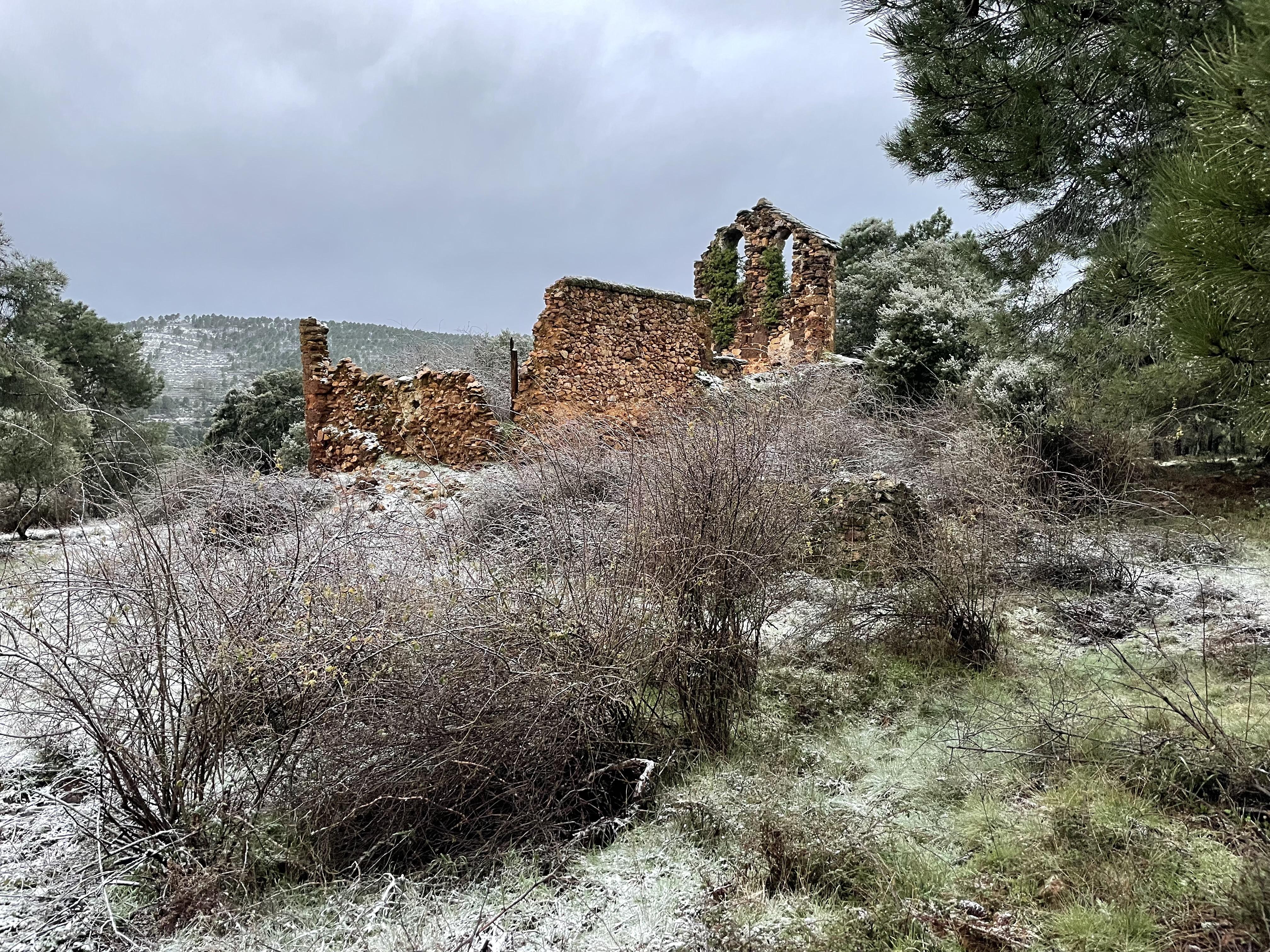-
Posts
124 -
Joined
-
Last visited
-
Days Won
4
Jqh73o last won the day on August 10 2024
Jqh73o had the most liked content!
About Jqh73o

- Birthday 04/23/2009
Contact Methods
-
Website URL
https://www.youtube.com/@Jqh73o-l7v
Profile Information
-
Gender
Male
-
Location
Spain
-
Interests
Music, poetry, Maths, photography, travelling, chess
-
Favorite Composers
Rachmaninoff, Liszt, Scriabin, Medtner, Ravel, Chopin, Szymanowski
-
My Compositional Styles
Late romantic, early twentieth century
-
Notation Software/Sequencers
Flat.io, but I am trying Dorico
-
Instruments Played
Piano
Recent Profile Visitors
3,797 profile views
Jqh73o's Achievements
-
Jqh73o started following Tale of a Forgotten Epitaph , Piano Sonata no. 5 complete!! , Nocturne in Ab Major and 4 others
-
I completely agree with the previous comments about adding more melody and giving the sixteenth notes more of a place in your composition, developing the idea and possibly fitting in a coda. Moreover, I think that splitting the accompaniment into the two staves looks rather ugly how it is done right now, and most importantly it makes difficult distinguishing melody notes from accompaniment ones. Can you create two voices in that stave? I really liked the dreamy harmonies employed here. From what I heard here I believe harmony is your strongest field in composition. Perhaps as a future goal I would recommend adding some more modulation and even thinking about implementing non-chord tones into accompaniment figures. Thanks for sharing Manuel
-
This is a piece following condensed sonata form written after finally defeating writers block for a few weeks. It was inspired by a bunch of forgotten about, cracked, ancient (possibly Roman) tombstones that lie on the side of a path in southern Spain, most of them were used for building two hundred years ago, but some lie there abandoned, peeking through the dried grass While I plan to revise it, it will not be in the near future, and it is finished how it is. I would appreciate feedback of any sort Here follows a guided analysis Introduction: b1-10 A monophonic chant presenting the main motif of the piece (ascending fourth), followed by the presentation of the ostinato for the first theme, which contains the second motif (three stepwise descending notes) Exposition: First Theme: b11-26 In Eb Phrygian Dorian, based on the shape of the opening chant, but also including motif two in the melody Transition: b27-34 Modulation from db to Bb Second Theme: b35-53 In Bb Acoustic, focusing in motif two but also including motif one Development: b54-92 Begins in E minor as a transformation of theme 1 in the lower register, with motif 1 serving as the accompaniment, it quickly gains harmonic instability and turns into transformation of theme 2 in A# minor, that turns into a restatement of the opening chant, but in C# minor, working as a false recapitulation. Instead of turning into a recapitulation of theme one, it goes back to the texture of the beginning of the development, but gains harmonic instability and serves as a way to lead back to the recapitulation Recapitulation: Second Theme: b93-108 In Eb acoustic, now triumphant Transition: b109-118 Reaches db minor and develops motif 1 mostly in its rhythmical shape, modulation back to Eb Phrygian Dorian First Theme: b119-128 Eb Phrygian Dorian, funeral-like and devoid of ornamentation Coda: b129-132 Opening chant, quoting Debussy’s Brouillards Thank you in advance Manuel
-
I would like some feedback on how to continue with this piece, the exposition is mostly finished (I only have the codetta left, and of course, to polish it), the recapitulation is also mostly done (except polishing and the transition), but I am having trouble with the development. I would like some feedback on the existing parts (as I am using very obscure modes that are prone to sounding weird) and some guidance to know how to continue with the development I used Phrygian-Dorian and acoustic scales for this piece, and it is entirely built around two motifs: one consisting on an iambic fourth, and the other one being three descending notes in scale. Therefore, I took this piece as an exercise in both having a thematic unity around the whole piece and the use of unusual modes In a few days I will try to play it in the piano to get a better, less mechanical rendition I hope it is evocative and you enjoy it Tale of a Forgotten Epitaph.pdf.pdf
- 1 reply
-
- 1
-

-
Hello @Thatguy v2.0, thanks for the feedback. I think I will eliminate the ending figure, specially since this one specifically is not a really inspired composition, it is just for my examinations, and I want to avoid it looking overly unusual I am now in the process of writing three other pieces. But knowing myself, they will either remain forever unfinished, be left for much later or just take an absurdly long amount of time to finish. I will have to revise this one again around mid February, though.
-
Hello @PeterthePapercomPoser, thanks for your feedback. The ending doesn’t convince me too much either, what do you think that could be done there? I completely agree in the fact that the strings have a horrible sound, I will try to solve that problem in the future About the orden of the instruments, it was originally written for piano and violin, so when I added the cello it appeared there, and I was too lazy to change it.
-
Jqh73o started following Instead of Christmas and sketch for piano "flight"
-
Hello @Samuel_vangogh Thanks for your feedback. Could you expand on the preparing and resolving of dissonances? Could you recommend a book or website where I can learn the rules of how to resolve and prepare dissonances? What do you mean with A-/E E7, I am not very familiar with the chord notation you used here? For the image, it was just an attempt at a connecting passage, but I will probably just extend the part before to make it link to the part after
-

Youth Composition Competition, 12th Year - due Feb. 14, 2025
Jqh73o replied to rmchaffee's topic in External Competitions
What are the basis to participate in the contest (what type of composition etc)- 2 replies
-
- composition competition
- contest
-
(and 1 more)
Tagged with:
-
After all I will not be participating as I was not able to compose anything good enough to be sent to the challenge. Sorry for saying this so late. I was trying to compose something good but all of the compositions I wrote were just not good enough
-
I like the piece, it feels very dreamy. One thing I would do to improve it is to make the piano accompaniment faster and more impressionist (like in un sospiro or un barque sur le ocean)
-
Hello @Bjarke I agree with what has been said before about this work: About bar 45 and the unplayability, I would suggest writing it so each semiquaver is followed by the other hand in a different register (look at the last 20 seconds of Rachmaninoff’s second sonata if my explanation wasn’t clear), for bar 114, maybe change the register of one of the repeated notes. It would fit the music and the idea you are trying to pursue to add thematic material with tritones and minor ninths, as these intervals (specially the tritone) are usually representative of the devil. Other techniques regarding this would be repeated notes (at a lower pace than the ones you wrote, because on the piano it is very difficult to play them) or petrushka polytonality, as the two tonal centers are a tritone away. Or you could experiment with passages where the harmony shifts by tritones. I am waiting to hear how this work progresses (my favourite part is bar 67 onwards). You could include it in the Halloween challenge. Thanks for sharing Manuel
-
Hello @Bjarke I am really fond of the progressive distortion that you choose to implement in this piece, it sounds like it is trying to take over the purity of the beginning in a way, though, as Henry has mentioned, this piece would benefit a lot from being longer, as, among other reasons, this structural technique is much more effective in longer works as you can see more easily how the music has changed (or kept the same after a rough development), as it has developed more. I would have added the lower strings a little earlier, but that is just personal taste Thanks for sharing Manuel
-

Speed composition for full orchestra
Jqh73o replied to Bjarke's topic in Orchestral and Large Ensemble
Hello @Bjarke Very nice references to dies irae. They fit the feeling of the music. Moreover, adding them mostly in the lower register makes it even more eerie. I think a way to make it even eerier would be to use very low octaves in the piano part, and double it rhythmically displaced in the very high register if that makes sense I also like your ability to maintain tension by the addition of an (almost) moto perpetuo The section at 1:47 sounds a bit anticlimactic though, I think you should extend the work a bit more after and before that point. However, if the piece extends the elevated intensity throughout might be a problem. A solution I suggest is to bring the music to a climax and then in subito piano add a simile section. I find it very effective, specially in orchestral music Thanks for sharing Manuel -
I agree with what has been said that the piece sounds like a piano transcription for orchestra: If it was written for piano here are some thoughts on the piano figuration: the doubling of the voices is excessive for a piano, in most cases you don’t need to double the voices too much on a piano, it will sound too saturated; the textures are too unstable, with this I mean that there are no clear patterns and you go from one texture to another too quickly, sometimes on the same phrase and there are almost no breaks between the different textures; the textures themselves have almost no running fast voices, in the most complex piano works texturally (rachmaninoff sonata 2, night wind sonata, sonata minacciosa) there is almost always a fast voice like this in their most dense moments; the fanfare motif sounds very difficult and slightly unpianistic, I would state just in octaves with maybe one of the voices of the chord (ideally one that repeats) being played too; the lack of pedal and quality of the midi also chastises the recording severely, so I think in a real piano it would sound much better. After writing this, I think you meant this for orchestra. Structurally I like the way you develop the first themes (and as this is a sketch, I believe that you will also develop the g major theme) But in order to understand it correctly it took me some listenings. I think this problem could be easily solved by adding some resting moments before introducing new material (kind of like a medial caesura, but not in sonata form) Thanks for sharing Manuel
-
Hello, I need help with learning more advanced Roman numeral analysis for chromatic harmony. I came across this problem when trying to write my analysis of Rachmaninoff’s elegy. In bar 4, the harmony is a dominant seventh flat nine without the root over a tonic pedal. And it is also a tonic prolongation. I have read, though I have no confirmation that tonic prolongations are just written as tonic all the time. But if it weren’t a tonic prolongation, how do I write it. Is the pedal point written separately or is it notated like in jazz with the / sign I have some other doubts such as: Is a tritone substitution notated as a Neapolitan seventh or does it have its own name in Roman numeral analysis? What is the Neapolitan is not in first inversion? What if an augmented sixth is not in a usuals inversion Etc Etc Etc. So, as I have an infinite amount of doubts: Could someone recommend a book or website that covers on Roman numeral analysis of experimental/daring harmony?


.thumb.png.8b5b433a341551e913a34392660bc95b.png)




